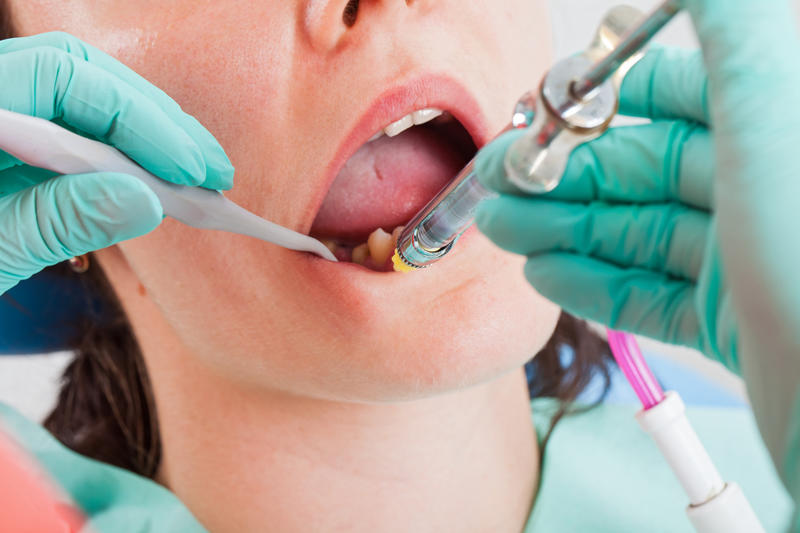
Get ready to take your dental assisting career to new heights with our exclusive 45-hour course. This Minnesota Board of Dentistry-approved training program will equip you to administer supraperiosteal and field block injections under direct dentist supervision. Our comprehensive course includes 25 hours of engaging didactic instruction through pre-recorded video lectures and assignments, 5 hours of hands-on injection experience in both at-home and clinical settings, and an immersive 15 hours of on-campus training where you'll successfully perform 50 supraperiosteal and field block injections during the course. Gain the confidence you need as you document your achievements and receive final approval for completing your training from our top-notch dental hygiene faculty at the renowned University of Minnesota School of Dentistry.
Pre-clinical assignment information will be sent prior to the course. Onsite clinical training will be held on Saturday and Sunday, June 7-8, 2025.
Register for Upcoming Sessions
April 7, 2025 6:30 pm - June 8, 2025 3:00 pm
All times for all events are in local Central Time.
Session Location:
Zoom Webinar, in-office/at-home practice, and the University of Minnesota School of Dentistry
Course Number: CF4815
Enrollment is limited to 36.
The new Minnesota Board of Dentistry rule states that administration of local anesthesia by a dental assistant is limited to supraperiosteal and field block injections 37.10 as prescribed by a dentist.
Before administering local anesthesia, a licensed dental assistant must:
- have at least one year of experience practicing as a Minnesota licensed dental assistant in general chairside dental assisting,
- complete a board-approved didactic and clinical course at a school accredited by the Commission on Dental Accreditation that requires clinical 37.16 competency in the administration of local anesthesia,
- pass a board-approved, nationally recognized local anesthetic examination (CDCA local anesthesia examination) and
- submit the Minnesota Board of Dentistry’s application for local anesthesia certification.
The University of Minnesota's three-part, board approved training program provides:
- 25 hours of self-paced didactic instruction including a welcome video/Zoom webinar, recorded video lectures, reading assignments, quizzes, and worksheets.
- 5 hours of at-home clinical experience, including a recorded presentation and practice time. Course participants may complete these hands-on experiences at home or in their dental office.
- 15 hours of clinical experience held at the University of Minnesota School of Dentistry, Minneapolis campus.
Course Prerequisites
- Minnesota Dental Assisting License
- Minimum of one year of current chairside experience as a Minnesota licensed dental assistant
- CPR certification
Learn How To
Analyze basic aspects of local anesthesia
- Selection and preparation of armamentarium
- Topical anesthesia
- Trigeminal nerve
- Basic injection technique
- Emphasis on aspiration and slow deposition
- Proper infection control techniques
- Proper disposal of sharps
- Types of injections (field blocks vs. nerve blocks)
- Documentation and record keeping
- Sharps injury prevention
Discuss pharmacology and neurophysiology
- Pharmacology of local anesthetics
- Neurophysiology
- Pharmacology of vasoconstrictors
- Anesthetic agents
Complete a patient assessment and assess dosage
- Indications for administration of local anesthetics
- Contraindications for administration of local anesthetics
- Absolute contraindications
- Relative contraindications
- Calculating the maximum recommended dose
- Emphasis on using minimum effective dose
Analyze potential complications and manage patients effectively
- Local complications
- Systemic complications
- Prevention, diagnosis, and management of medical emergencies
- Review medications in a standard emergency kit
Consider the importance of toxicity
Demonstrate supraperiosteal and field block infiltration technique
- Anatomy of the head, neck, and oral cavity as it relates to administering local
- Anesthetic agents for SPs
- Facial/Buccal SPs
- Palatal SPs
- Pediatric Considerations for SPs
Overview of injection techniques
- ASA
- MSA
- PSA
- NP
- GP
- M/I
- IAN
- GG
Load a syringe and demonstrate safe recapping technique
Memorize essential anatomical landmarks
Training Methods
Lecture, discussion, self-study sessions, case studies, demonstration, simulation, laboratory exercises
Note
Injection techniques will be practiced on each other & clinical models. Pregnant women may attend this course, but will not receive injections.